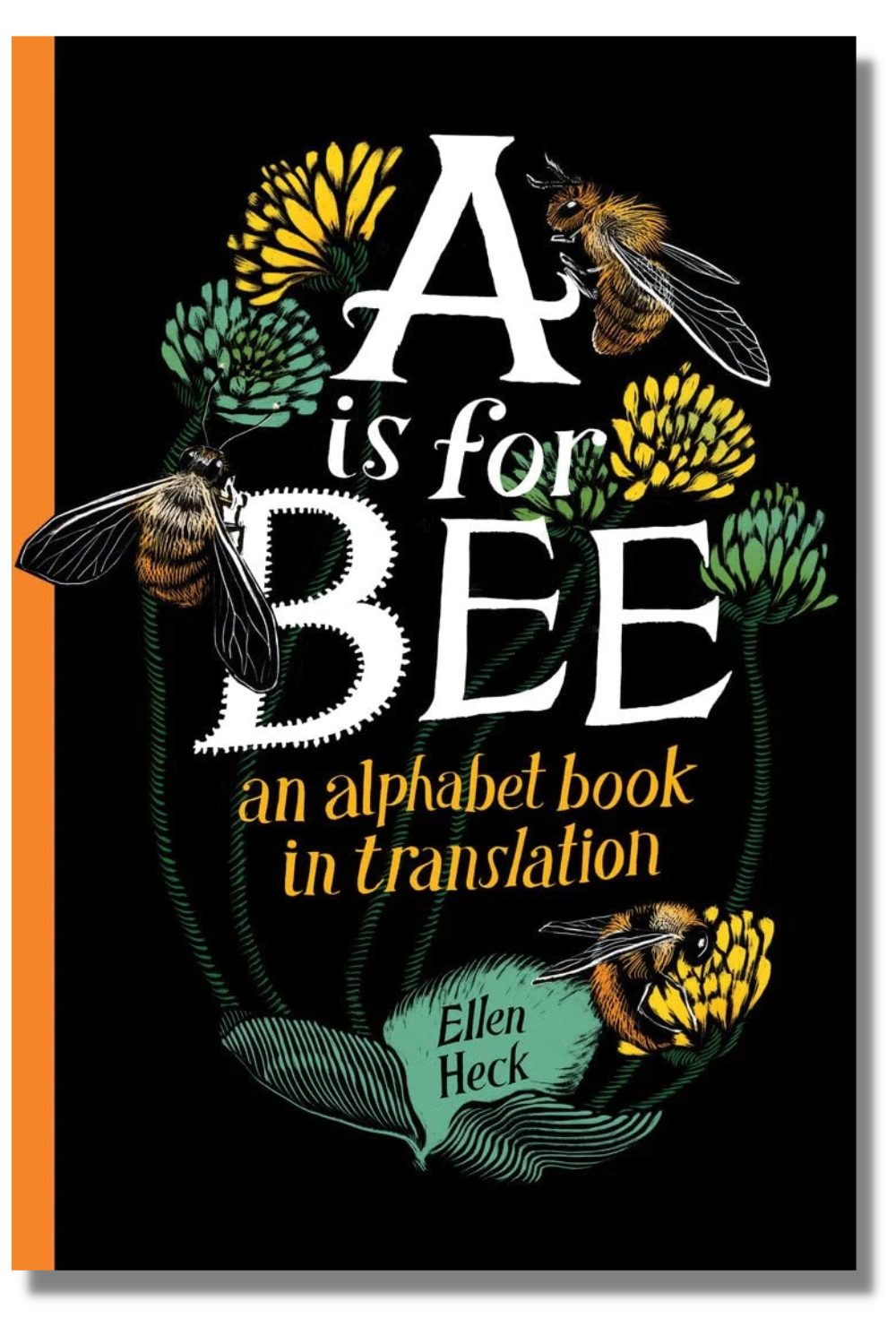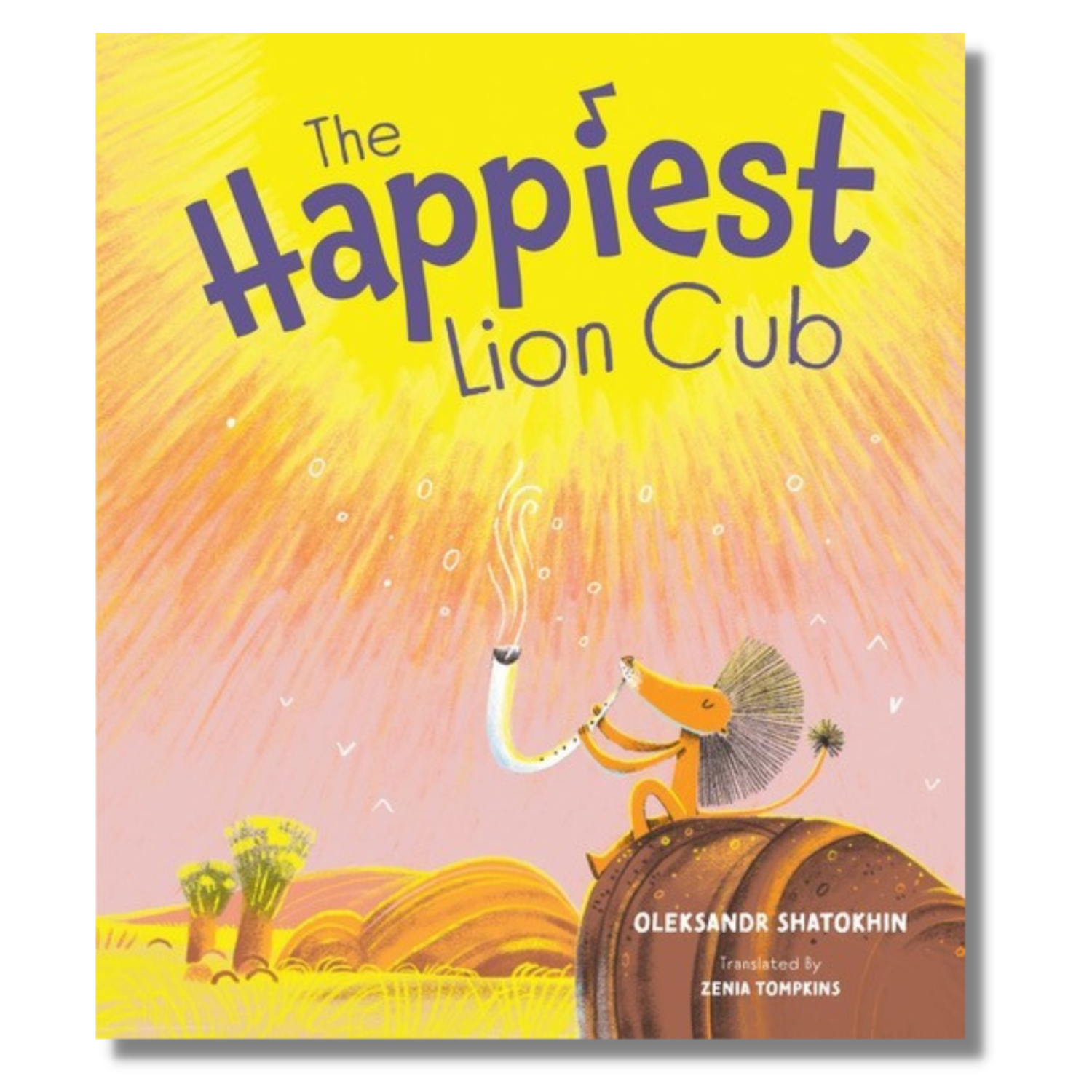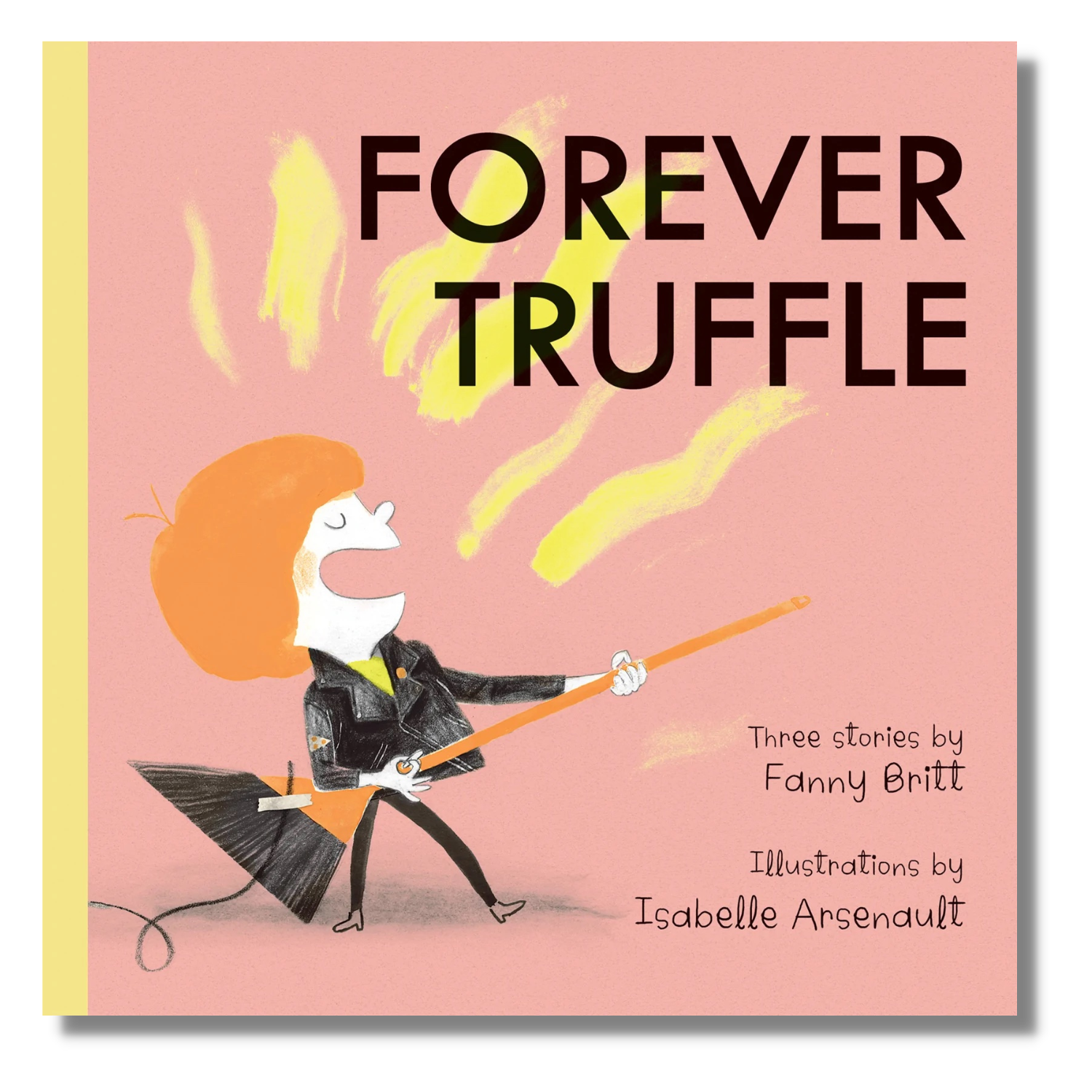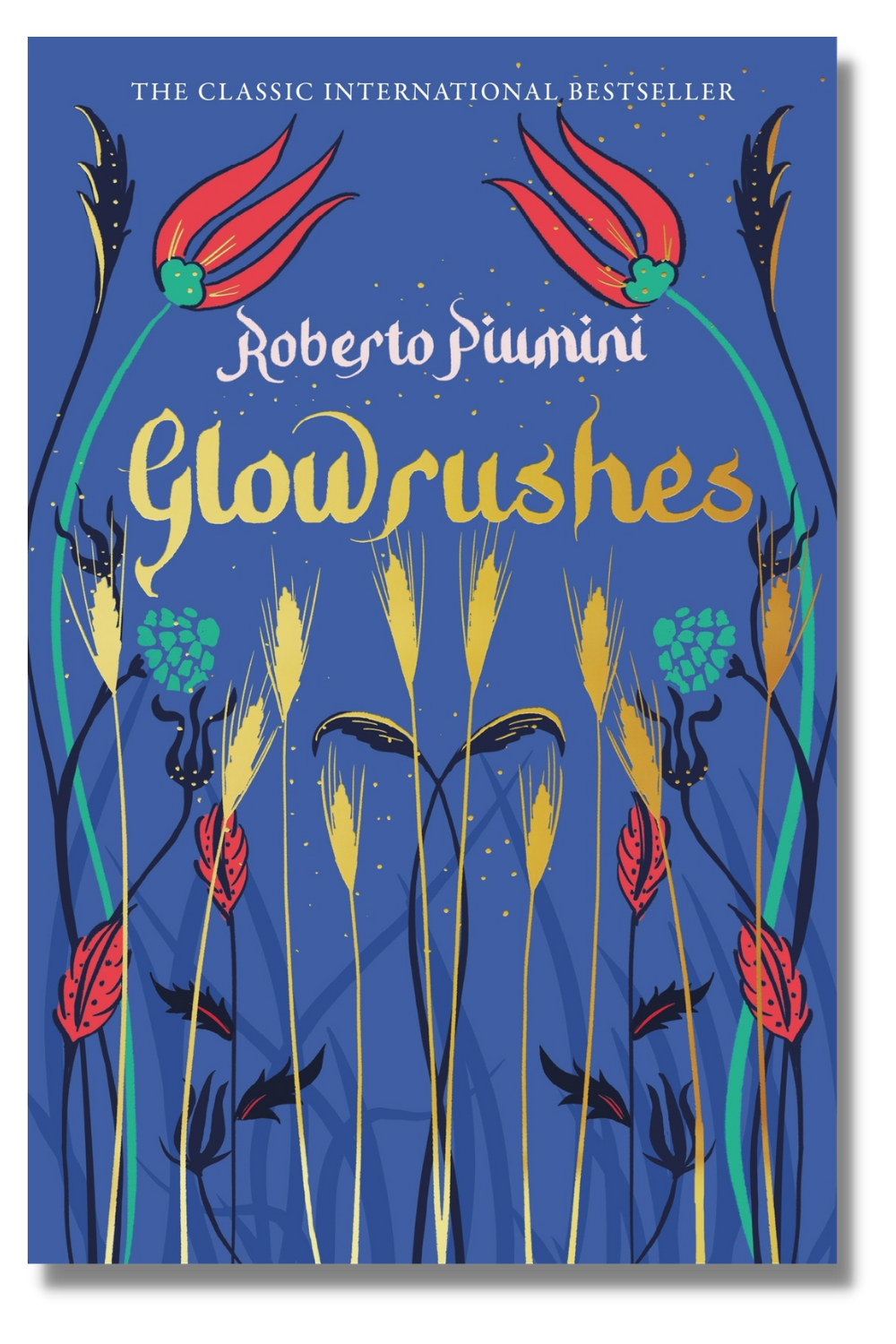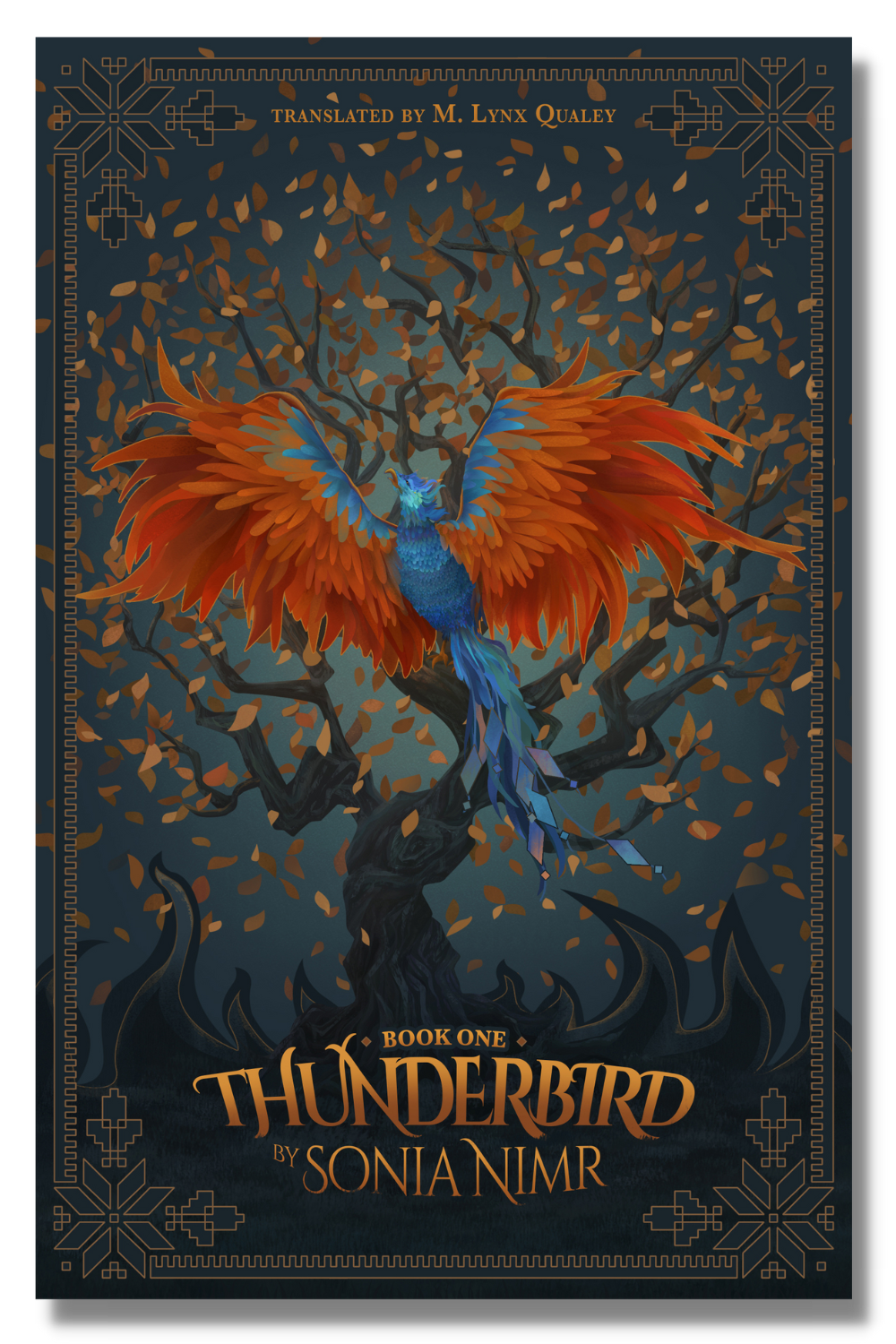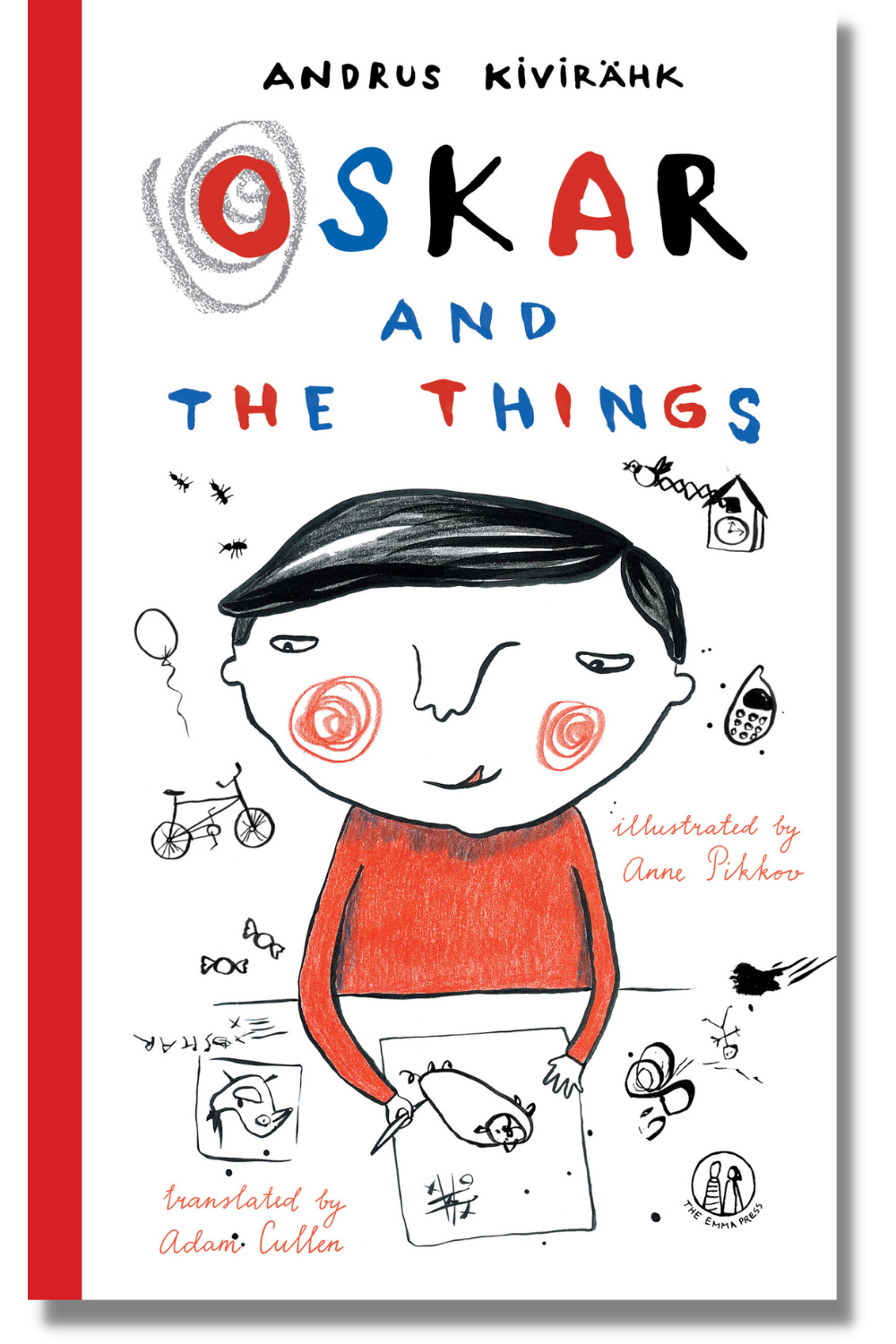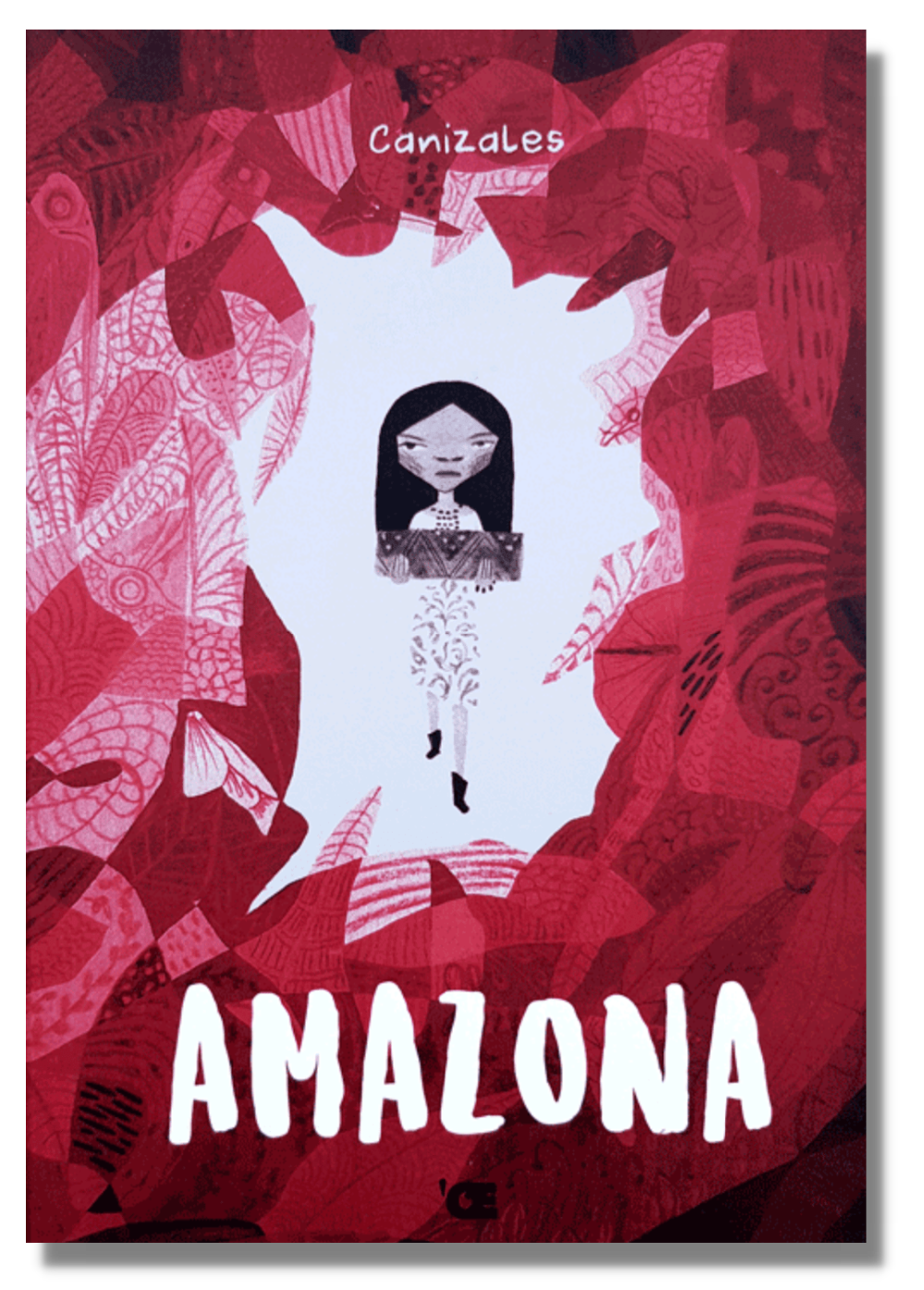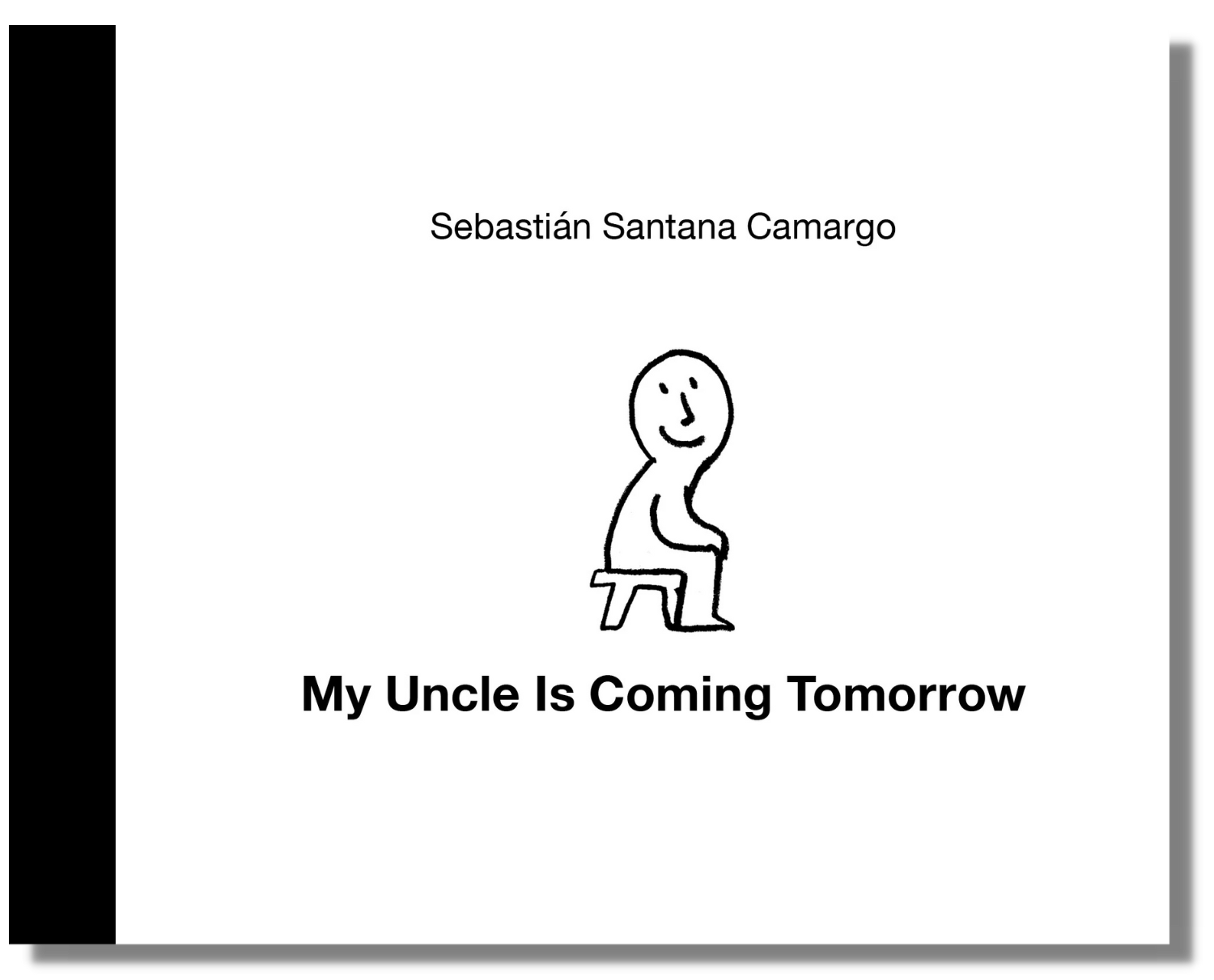Project World Kid Lit is a global, grassroots community initiative aimed at helping readers of all ages to explore world literature for children and adolescents, with a particular focus on books in translation from other languages.
The coeditors of the World Kid Lit blog—Johanna McCalmont, Jackie Friedman Mighdoll, and Claire Storey—share nine favorites published in 2022, taking you on a kid lit tour of Argentina, Canada, Colombia, Estonia, Italy, Palestine, and Ukraine.
PICTURE BOOKS
A is for Bee: An Alphabet Book in Translation
Written and illustrated by Ellen Heck
Published by Levine Querido in the US and Pushkin Press in the UK, 2022
Reviewed by Jackie Friedman Mighdoll
Alphabet books are often used to teach a plethora of fun and interesting words that go with each letter. But sometimes they use the alphabet as a structure through which to offer another set of information. A is for Bee: An Alphabet Book in Translation turns our understanding of the alphabet upside down—and I love this book for that. It isn’t really about English whatsoever; it’s a fun introduction to other languages.
Author/illustrator Ellen Heck starts the book with “A is for Bee” and shows how that’s the case. A is for Anu in Igbo, Arı in Turkish, Aamoo in Ojibwe, and Abelha in Portuguese—all of which mean “bee.” The book takes us through the alphabet and twenty-six familiar animals, paired in unexpected ways. On a first read, it’s an introduction to the names of languages from around the world and to the idea that each language refers to the same animal in its own way. But the book—and its backmatter—offer opportunities for other explorations. Which languages are similar? How do you pronounce an “x” at the beginning of a word? Where are these languages spoken? It’s the ABCs of language appreciation.
A Place for Pauline
by Anouk Mahiout, illustrated by Marjolaine Perreten, translated from French by Anouk Mahiout & Comme Les Géants
Groundwood Books, 2022
Reviewed by Johanna McCalmont
Redhead Pauline likes flowers and books, just like her grandma. Her friends tell her she’s very lucky: as the oldest child in a family of five, almost six, she gets new clothes and can stay up late. But Pauline doesn’t feel lucky at all in a house so full of people! No matter where she tries to read her favorite book, there’s always someone else around. So she creates a secret hideaway under the stairs where she dreams of her own kingdom full of poppies. But that’s not much fun either since no one knows she’s there. Pauline comes up with a new plan: she’ll leave on the next big ship. She packs her things, including some of her dad’s delicious cookies, makes an announcement, and still no one notices her. Then, as Pauline is about to leave, she meets her mom, who has been waiting for her to plant some flowers in the garden. Had Pauline been about to leave? asks her mom. No, she’s just come back from a long journey.
The colorful palette, characters with wide, expressive eyes, gray and white spreads featuring Pauline’s memories, and simple dialogue full of emotion invite readers into the ups and downs of Pauline’s mood and daily life. This charming graphic novel is bound to speak to anyone who has ever felt out of place—and shows how your place may be somewhere you didn’t expect.
The Happiest Lion Cub
Written and illustrated by Oleksandr Shatokhin, translated from Ukrainian by Zenia Tompkins
Red Comet Press, 2022
Reviewed by Johanna McCalmont
A Lion King is expected to do lots of things, like hunt, roar loudly, or maintain a regal silence. So many things that Lion Cub’s father has even written him a very long list! But this unusual little Lion Cub doesn’t want to do any of that—he loves music and dreams of playing in an orchestra. As Lion Cub wanders through the rain, feeling sad and misunderstood, he hears a noise coming from the spooky, prickly thicket and doesn’t think twice about going to investigate. He discovers a lost little fox pup and uses his music to help guide it to safety, revealing not only his big heart but his courage, too. This heartwarming tale and the bright illustrations full of lines expressing emotion and movement will captivate readers and remind them that you can still be brave while doing what you enjoy most.
MIDDLE-GRADE FICTION AND GRAPHIC NOVELS
Forever Truffle
by Fanny Britt, illustrated by Isabelle Arsenault, translated from French by Susan Ouriou
Groundwood Books, 2022
Reviewed by Jackie Friedman Mighdoll
Forever Truffle is the new companion book to one of my all-time favorite graphic novels, Louis Undercover. The new Canadian book stars Truffle, Louis’s ebullient younger brother, in three linked stories. In the first, Truffle dreams about creating a band named “The Man-Eating Plants.” In the second, he struggles with how to express his love to his girlfriend, Nina. And in the third, he goes to his great-grandmother’s funeral and ponders life and death.
At one point, a very excited Truffle says to his brother, “Louis, did you know that sometimes you can be so very glad you can feel kinda sad?” This acknowledgment of the complexity of feelings resonates throughout the book. The words and illustrations capture the fantastical whimsy and joys of childhood, as well as some of the struggles and more difficult questions that we all face.
Glowrushes
by Roberto Piumini, translated from Italian by Leah Janeczko
Pushkin Press, 2022
Reviewed by Johanna McCalmont
One day, a long, long time ago, a Turkish painter called Sakumat receives a mysterious invitation from Ganuan, the burban, or lord, of the land of Nactumal. The burban’s eleven-year-old son, Madurer, suffers from a strange illness and cannot leave the palace for fear that the dust and sunlight outside will harm him. So Ganuan asks Sakumat to decorate Madurer’s three rooms with bright colors and pictures. Thus begins a tender friendship between the renowned painter and the imaginative young boy. As Sakumat’s beard grows, the pair spend weeks imagining the scenes for the rooms—a mountain, the sea, and a meadow—and then months working on the paintings together. Yet these are no ordinary paintings: the scenes appear to have a life of their own. But despite his newfound energy and joy, Madurer’s health begins to fail. Summer turns into autumn, and Sakumat gradually repaints the meadow to capture the passing of time and the slow disappearance of the mystical golden Glowrushes.
This modern Italian classic, written as a traditional fable in poetic prose, will transport readers, young and old alike, into an enchanting, magical bygone realm. Madurer’s imagination, Sakurat’s artistic genius and attentive ear, and Ganuan’s devoted fatherly love bring hope, energy, and love to a young life that is sadly all too brief.
Thunderbird (Books 1 and 2)
by Sonia Nimr, translated from Arabic by Marcia Lynx Qualey
University of Texas Press, 2022
Reviewed by Claire Storey
Thunderbird takes you on a magical quest back in time, set against the backdrop of Jerusalem. Teenager Noor’s task is a complex one: prevent the invisible wall between the human world and that of the djinn and other creatures from collapsing and thus save the world. As the only one who can do this, Noor accepts her mission and sets off to cross several centuries to find four feathers from four different thunderbirds—or phoenixes—at the very moment each one burns.
The adventure takes place over three slender volumes, and my daughter literally squealed when we started part two! Suffice to say, it did not disappoint. Book two also delves deeper into Jerusalem’s history, and reading it led to some interesting discussions. On her quest, Noor has help from the magical realm as well as the human world, including a very cute cat with a voice like the ringing of thousands of tiny bells, some other girls who look surprisingly like Noor—each with a special gift—and Dr. Samir, the best friend of her beloved parents, who died when she was young. Will Noor find all four feathers? We can’t wait for part three to find out!
Read an excerpt of Thunderbird on WWB.
Oskar and the Things
by Andrus Kivirähk, illustrated by Anne Pikkov, translated from Estonian by Adam Cullen
The Emma Press, 2022
Reviewed by Claire Storey
Oskar’s parents are going away to work for the summer, and he’s been shipped off to his grandma’s place in the country. Ugh! What’s more, he forgot to pack his phone, and with the bookshelves full of grown-up books, “what on earth was he going to do for two whole months?”
This is a great story about unplugging from your phone and noticing things around you to make your own fun. The story is accompanied by joyful illustrations in striking red, blue, and black. At first, Oskar looks down on everything this boring countryside place has to offer, from Grandma’s porridge that his father used to love to the kids next door, but he is forced to find something to do. He finds a block of wood and uses his imagination to turn it into a phone. Imagine his surprise when a voice starts answering back . . . .
YOUNG ADULT FICTION AND GRAPHIC NOVELS
Amazona
by Canizales, translated from Spanish by Sofía Huitrón Martínez
Graphic Universe/Lerner, 2022
Reviewed by Claire Storey
This powerful YA graphic novel from Colombian-born creator Canizales is a story of displacement and destruction told by “a woman of the Amazon” who has returned to “settle some issues.”
Nineteen-year-old Andrea returns to the Amazon to bury her baby, but finds her village almost completely destroyed by the people who forced her and her neighbors to flee eighteen months before. The poignant black-and-white illustrations with splashes of color provide flashbacks to previous times, demonstrating the suffering of Andrea’s community. Forced to move to the city, their cramped accommodations and way of life leave a lot to be desired.
As Andrea is burying her dead child in the Amazon, she bravely takes photographs as evidence to bring back to the city and present to a lawyer, including the moment an armed guard tries to assault her. While in the rainforest, she encounters a watchman, and they realize that they met as children. He has his own story to tell about how he ended up working as a guard.
At the back is a useful note about Colombia’s Indigenous communities and the inspiration for this graphic novel.
My Uncle Is Coming Tomorrow
Written and illustrated by Sebastián Santana Camargo, translated from Spanish by Elisa Amado
Greystone Kids, 2022
Reviewed by Jackie Friedman Mighdoll
My Uncle is Coming Tomorrow looks like a simple picture book with black-and-white line drawings, relatively little text, and an optimistic main character. But this is a book for older children, for teens, and for adults on a serious topic. The text begins: “My father and mother told me that my uncle is coming tomorrow to stay with us for a few days.” Waiting on a bench in front of the door for the uncle to come, the character ages from a child to a parent to a grandparent. Ultimately, the bench is empty, and the uncle never shows up. Why not? The answer lies in a horrible truth of forced disappearances.
The afterword explains that people have disappeared throughout history and that their absences cause great pain to those left behind. It gives the history of the “systematic instrument of terror” used by governments since the Cold War and relays examples from around the world.
Copyright © 2022 by Jackie Friedman Mighdoll, Johanna McCalmont, and Claire Storey. All rights reserved.









